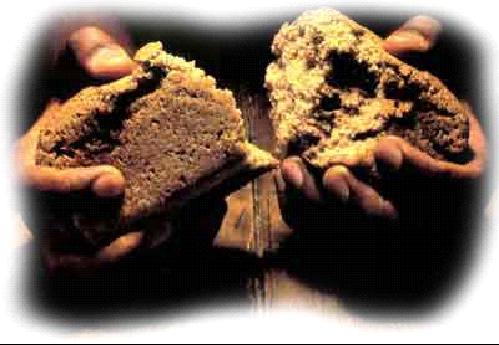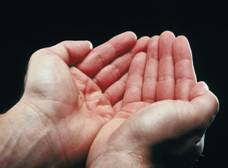
chris@mcdonnell83.freeserve.co.uk
Previous articles by Chris
July 17, 2013 Chris McDonnell, UK
The
Bread is Broken

|
|
chris@mcdonnell83.freeserve.co.uk July 17, 2013 Chris McDonnell, UK The
Bread is Broken |
|
A few days ago I read an article by Tom O’Loughlin, professor of Historical Theology at the University of Nottingham (UK), published in this month’s edition of the Irish journal, The Furrow.
It
was entitled:
“We are One Loaf” – a way of
understanding the Eucharist.
His
development of discussion of the Eucharist starts with reference to the
Derrynaflan Paten now in the
Our
own understanding of a paten is of a small precious metal disc that is just a
little bigger than the large altar bread that is consumed by the priest, and it
has been so for many years. On the other hand the Derrynaflan paten is much
bigger – O’Loughlin compares it to a large dinner plate. It dates from the
Eighth Century and relates to a celebration of the Eucharist from a much earlier
time than our own.
The
celebration of the Eucharist in the earlier years of the Church, (and we are not
talking here of the Medieval West but the first few hundred years of Christian
faith) is essentially a different social celebration.
It
was a celebration involving a small gathering of people and that allowed
different opportunities. The sharing of the Eucharist was indeed the division of
the one bread, a physical sharing of the loaf on the much larger paten. This is
clear from the Didache text and prayers of the early Church.
The Institution of the Eucharist was, after all, given at a celebration
of the Passover where a limited number of people were present.
This
we have lost. Our parish sizes go beyond this intimacy and the action of
breaking of the Bread by the priest has no practical outcome other than making
his own consumption of the Eucharist easier. Kevin Nichols’ beautiful hymn,
often used at the time of the Offertory, opens with the line “In
bread we bring you Lord, our bodies labour” and the second
verse “the
bread we offer you is blessed and broken” . I knew Kevin
Nichols during the years of my training to teach. Whenever we sing his words,
their Eucharistic significance reminds me of that now distant time.
For
many years in our Parish, at weekday masses when smaller numbers were present,
we gathered round the altar at Communion time. We shared the Sign of Peace with
each other and each of us with the celebrant as we stood round him at the altar.
That has now unfortunately been stopped and an action that had significance has
been lost.
Maybe
when there is the need for a large celebration of the Eucharist, our present
practice is the only practical solution. But couldn’t we look, with a degree
of latitude, at small celebrations and allow the breaking and sharing of the One
Bread with the priest? Certainly the Eucharist we share should be from the Bread
of the Offertory from that Mass and not taken from the Tabernacle. The
Reservation of particles is necessary for the sick but should not be seen as the
normal manner in which we share the Broken Bread of each Eucharist.
Returning to our roots can, as Tom O’Loughlin concludes in his article, be very disturbing, for seeking where we have come from can often highlight the deviation of practice over many subsequent years. I do recommend that you read the full article, for it is both informative and challenging. (ref The Furrow July/August 2013.)

Comments welcome here